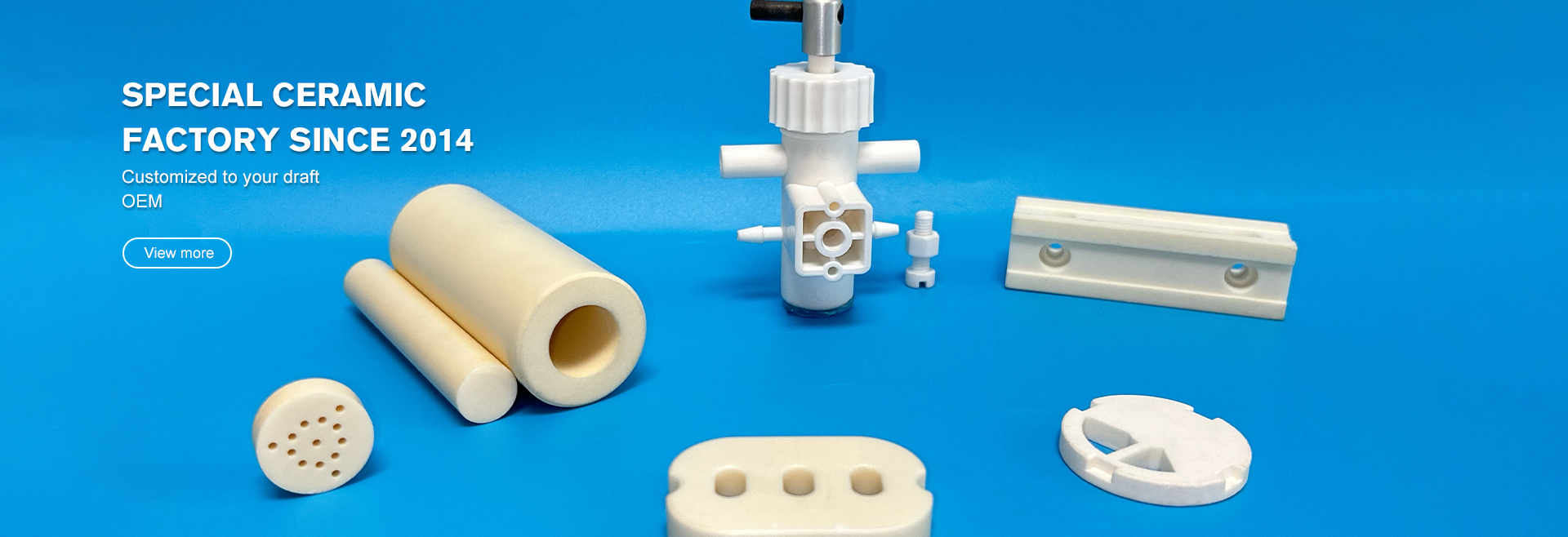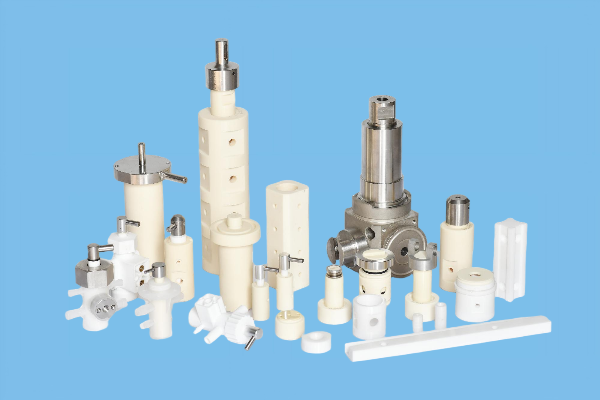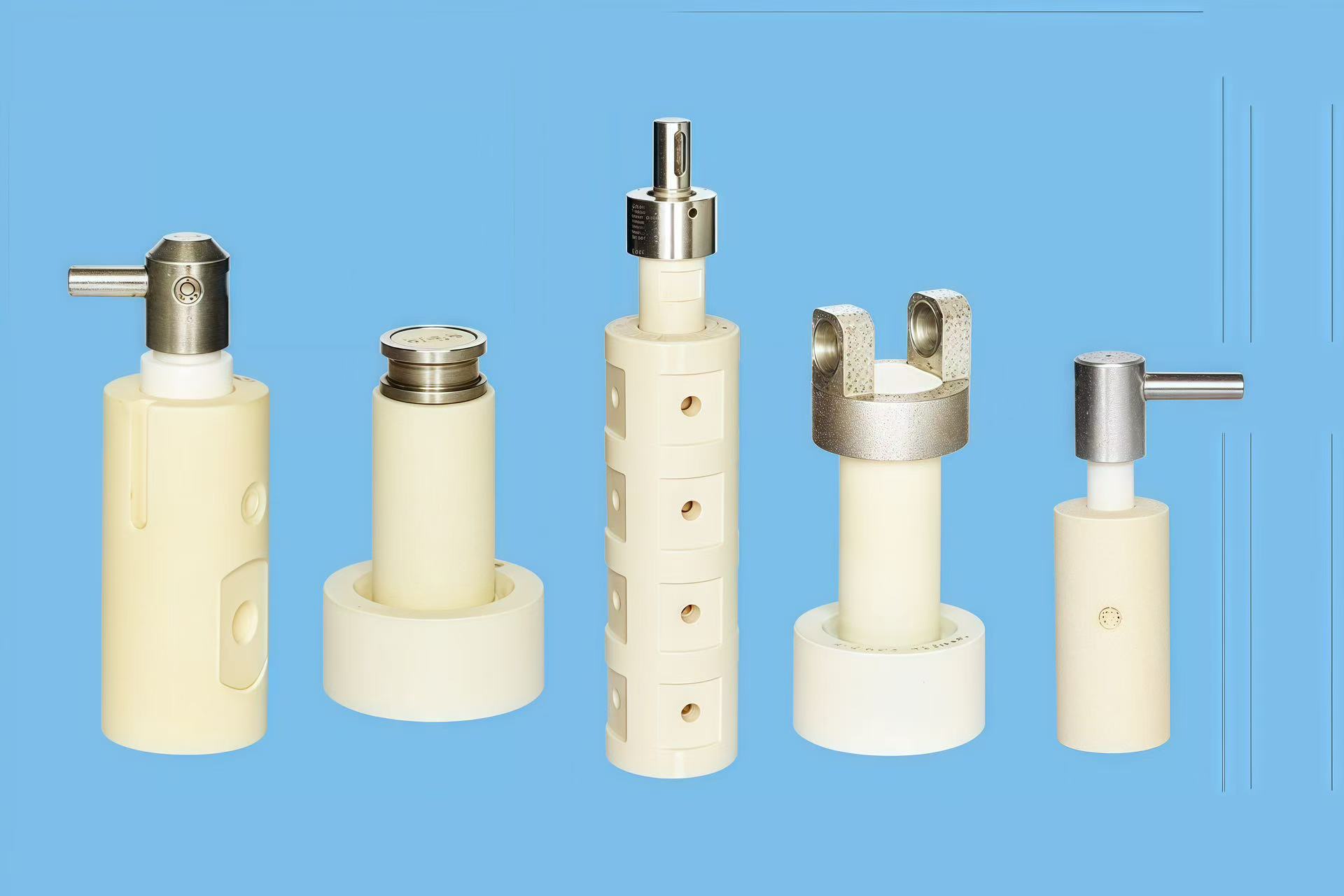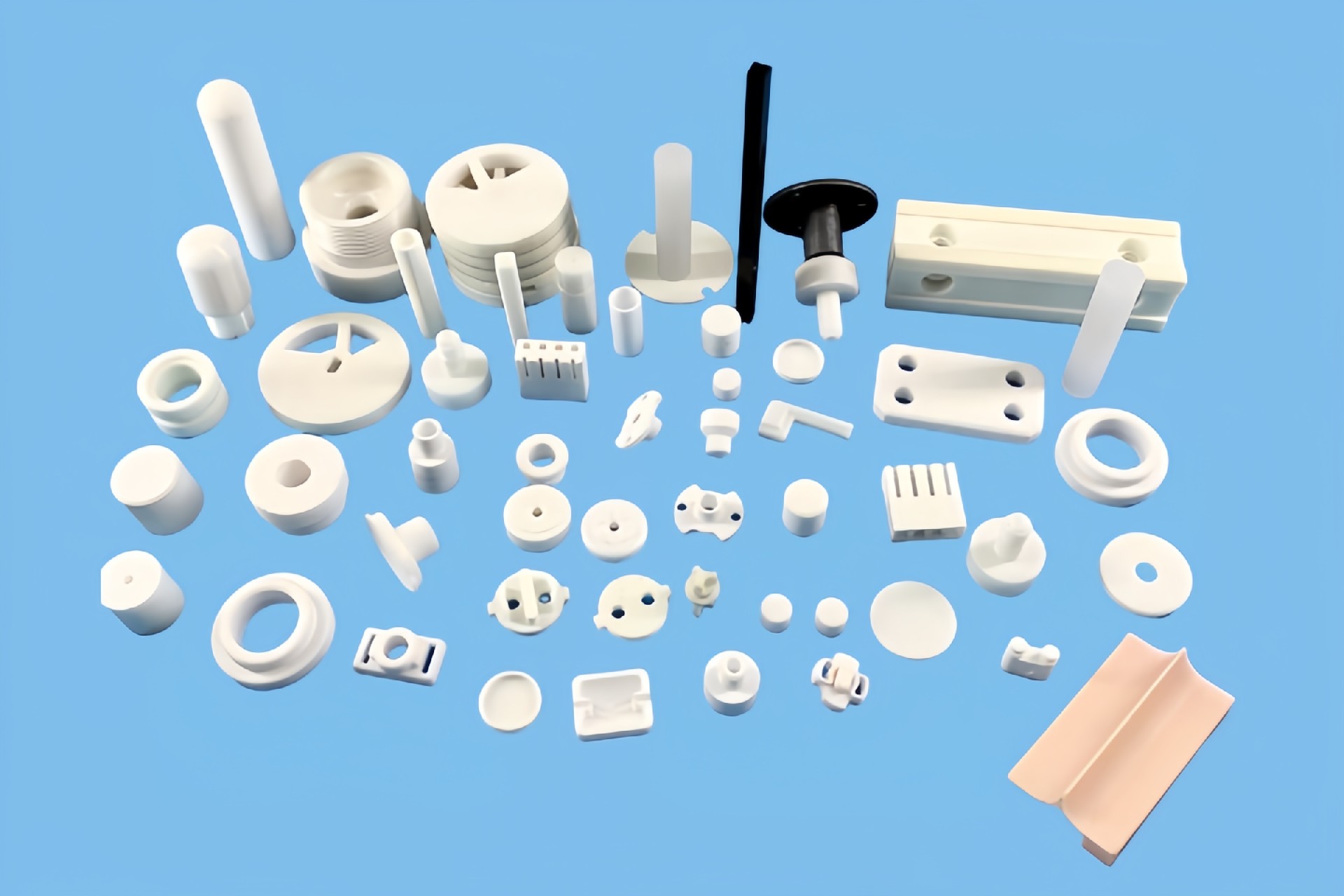News
LATEST NEWS
- 01The structure and principle of ceramic pumps
- 02The application fields of ceramic pipes
- 03Alumina ceramic properties
- 04The treatment method of valve corrosion and anti-corrosion measures
- 05Valve selection - flow characteristics and connection forms
- 06Medicine filling pump application
- 07What is a ceramic dispensing pump used for

Address:1st Floor, Zixiang Road, Pingshan District, Shenzhen, Guangdong Province
Zip Code: 518100
Phone: +86 13410681808
E-mail:glzmdy@163.com
Industry News
HOMEIndustry News
The treatment method of valve corrosion and anti-corrosion measures
2025-10-29 14:54:34 View:173The treatment method of valve corrosion and anti-corrosion measures
Corrosion is the destruction and deterioration of materials under the action of various environments. The corrosion of is mainly caused by chemical corrosion and local chemical corrosion, and the corrosion of non-metallic materials is generally caused by direct chemical and physical actions.
1. The of valve corrosion
There are two forms of metal valve corrosion, namely, uniform corrosion and local corrosion. The speed of uniform corrosion can be evaluated by the annual average rate. Metallic materials, graphite, glass, ceramics and concrete are divided into 4 grades according to the corrosion rate: those with a corrosion rate of less than0.05mm/a are excellent; those with a corrosion rate of 0.05~0.5mm/a are good; those with a corrosion rate of0.5~1.5mm/a are still usable; those with a corrosion rate greater than 1.5mm/a are not suitable. The sealing surface, stem, diaphragm, small spring and other valve parts are generally made of primary materials, and the valve body and valve cover are suitable for secondary or tertiary materials For valves used for high pressure, highly toxic, flammable, explosive and radioactive media, materials with very low corrosion should be selected.
1、Uniform
Uniform corrosion occurs on the entire surface of the metal. For example, a layer of protective film is produced on the surface of stainless steel, aluminum, titanium and metals in an oxidizing environment, and the metal state under the film is uniformly corroded. There is also a phenomenon that the metal surface is corroded and peeled off, is the most dangerous corrosion.
2、Local corrosion
Local corrosion occurs at a local position on the metal. Its forms include pitting corrosion, cre corrosion, intergranular corrosion, delamination corrosion, stress corrosion, fatigue corrosion, selective corrosion, wear corrosion, cavitation corrosion, vibration corrosion, hydrogen corrosion, etc.
Pitting corrosion usually occurs on metals with a passive film or protective film, which is caused by defects on the metal surface and active ions in the solution that can destroy the film, leading to local damage of the passive film, extending into the metal interior, and becoming pits. It is one of the most destructive and hidden corrosion forms of metals.
Crevice corrosion occurs in environments such as under welds, rivets, gaskets, or deposits, and it is a special form of pitting corrosion. The method is to eliminate crevices.
Intergranular corrosion penetrates the metal from the surface along the grain boundary, causing the grain boundary to corrode in a-like manner. The main causes of intergranular corrosion, in addition to the precipitation of impurities at the grain boundaries, are improper heat treatment and cold working. Austenitic steel welds are prone to corrosion in the chromium-deficient zones on both sides of the weld. Intergranular corrosion of austenitic stainless steel is a and most dangerous form of corrosion. The methods to prevent the occurrence of intergranular corrosion in austenitic stainless steel valve parts are: to carry out "solid solution quen" treatment, i.e., heat to about 1100℃ and quench in water, select austenitic stainless steel containing titanium and niobium and containing carbon less than 0.03%, to reduce the generation of chromium carbide.
Delamination corrosion occurs in layered structures, where corrosion develops vertically inward, and then corrodes substances parallel to the surface, causing the surface to peel off in layers under the expansive force of the corroded substances.
St corrosion occurs in the presence of both corrosion and tensile stress, resulting in cracking. The methods to prevent stress corrosion are: to eliminate or reduce the stress generated in welding and cold through heat treatment, to improve the unreasonable valve structure, to avoid stress concentration, and to adopt electrochemical protection, spraying anticorrosive paint, adding inhibitors applying compressive stress and other measures.
Corrosion fatigue occurs at the point of common action of alternating stress and corrosion, causing the metal break. Heat treatment can be performed to eliminate or reduce stress, and surface shot peening treatment, as well as electroplating with zinc, chromium, nickel, etc. can be applied, but care must be taken to avoid tensile stress and hydrogen diffusion in the coating.
Selective corrosion occurs in materials with different components and impurities, where in a certain environment, some elements are corroded and leached out, leaving behind uncorroded elements in a sponge-like state. Common examples include dezincing brass, de-aluminizing of copper alloys, and graphitization of cast iron.
Wear corrosion is a type of corrosion morphology caused by the alternating action fluid abrasion and corrosion on metal, and it is a common corrosion in valves, which often occurs on sealing surfaces. Preventive methods include selecting corrosion-resistant and wearresistant materials, improving structural design, and adopting cathodic protection.
Bubble corrosion, also known as cavitation and gas erosion, is a special form of wear corrosion. is caused by the air bubbles generated in the fluid, which produce shock waves when they burst, with pressures that can reach up to 400 atmospheres, destroying the metal's protective film and even tearing metal particles. Then it corrodes into a film, and this process is repeated continuously, causing metal corrosion. Methods to prevent bubble corrosion include selecting resistant to bubble corrosion, having a high degree of surface finish, elastic protective layers, and cathodic protection.
Frictional corrosion is the destruction caused by vibration and sliding the contact surface of two components that are simultaneously subjected to load. Frictional corrosion occurs at the bolt connection, the connection between the valve stem and the closure, and between the bearing and the shaft. Lubricating grease can be applied to reduce friction, phosphatization can be used on the surface, hard alloy can be selected, and surface hard methods such as spraying or cold working can be used for protection.
Corrosion is the destruction caused by the diffusion of hydrogen atoms generated in a chemical reaction into the of the metal. Its forms include hydrogen blistering, hydrogen embrittlement, and hydrogen corrosion.
High-strength steel and steel containing nonmetals are prone hydrogen blistering. Hydrogen blistering is prone to occur when oil contains sulfides and hydrides. The use of non-porous killed steel instead of porous rim steel, the use of rubber and plastic protection, and the addition of corrosion inhibitors can prevent blistering.
In high-strength steel, the crystal lattice is highly, and after hydrogen atoms enter, the 4-crystal lattice strain is even greater, causing financial embrittlement. Nickel and lead-containing alloy steel should be, high-strength steel with high hydrogen embrittlement should be avoided, and hydrogen embrittlement should be avoided or reduced in welding, electroplating, and pick. Hydrogen enters the metal under high temperature and high pressure, and reacts chemically with a combination of elements to cause damage, which is called hydrogen corrosion. Austenitic steel is completely resistant to high-temperature hydrogen corrosion.
3. Corrosion of Nonmetals
The magnitude of nonmetal corrosion is the same as that of corrosion. The vast majority of nonmetallic materials are nonconductors of electricity and generally do not produce electrochemical corrosion, but are purely chemically or physically corroded, which the main difference from metal corrosion. Nonmetal corrosion does not necessarily result in weight loss but is often an increase in weight, whereas weight loss is the main feature of metal corrosion. nonmetal corrosions are caused by physical action, whereas metal corrosion is rarely caused by physical action; internal corrosion of nonmetals is a common phenomenon, whereas metal corrosion is mainly corrosion.
2. Anticorrosive measures for metal valves
Electrochemical corrosion corrodes in various forms. It not only acts on two metals, but also produces a potential difference due to the difference in solubility of the solution, the difference in solubility oxygen, and the slight difference in the internal structure of the metal, which intensifies the corrosion. Some metals themselves are not resistant to corrosion, but they can produce very good films after corrosion, namely passivation films, which can prevent the corrosion of the medium. It can be seen that in order to achieve the purpose of anticorrosion of valves, one is to eliminate electrochemical corrosion; two is to be able to produce a passivation film on the metal surface when electrochemical corrosion cannot be eliminated; three is to non-metallic materials that do not have electrochemical corrosion to replace metal materials. Several anticorrosive methods are introduced below.
1. Select corrosion- materials according to the medium
In the section "Selection of Valves", we introduced the media to which the commonly used materials of valves are applicable, but it is a general introduction. In the actual production, the corrosion of the medium is very complicated. Even if the materials of the valves used in the same medium are the same, the corrosion the medium is different if the concentration, temperature, and pressure of the medium are different. The corrosion rate increases by about 1 to 3 times for every 10℃ in medium temperature. The medium concentration has a great influence on the corrosion of the valve material. For example, lead in a small concentration of sulfuric acid has little corrosion, but the concentration exceeds 96%, the corrosion increases sharply. On the contrary, carbon steel is most severely corroded when the sulfuric acid concentration is around 50% and when the concentration increases to more than 6%, the corrosion decreases sharply. Similarly, aluminum has strong corrosion resistance in concentrated nitric acid with a concentration of more than80%, but it is more seriously corroded in medium and low concentration nitric acid. Stainless steel, although it has strong corrosion resistance to dilute nitric, is corroded more seriously in concentrated nitric acid above 95%.
From the above examples, it can be seen that the correct selection of valve materials be based on the specific situation, analyze various factors affecting corrosion, and select materials according to the relevant anticorrosive manual.
2. Use non-met materials
Non-metallic materials have excellent corrosion resistance. As long as the temperature and pressure of the valve meet the requirements of non-metallic materials, it can only solve the corrosion problem, but also save precious metals. The valve body, valve cover, lining, sealing surface, etc. of the valve are often made of non-met materials. As for gaskets and packing, they are mainly made of non-metallic materials. Polytetrafluoroethylene, chlorinated polyether and other plastics as well as natural rubber, chloroprene rubber, and butyl rubber are used as valve linings, while the valve body and valve cover are made of general cast iron and steel. This not only ensures the strength of the valve but also ensures that the valve is not corroded. The sleeve valve is also designed according to the excellent corrosion resistance and excellent performance of rubber. Nowadays, more and more nylon, polytetrafluoroethylene and other plastics, as well as natural rubber and synthetic rubber, are used to make various surfaces, sealing rings, etc. for various valves. These non-metallic materials used as sealing surfaces not only have good corrosion resistance but also have good sealing performance, especially suitable use in media with particles. Of course, their strength and heat resistance are low, and the range of application is limited. The emergence of flexible graphite has enabled non-met to enter the high-temperature field and solve the problem of leakage of packing and gaskets that has been difficult to solve for a long time, and it is also a good-temperature lubricant.
3. Spraying paint
Paint is the most widely used method of preservation, and it is indispensable preservative and identifying mark on valve products. Paint is also a non-metallic material, usually composed of synthetic resins, rubber emulsions, vegetable oils, sol, etc., applied to the metal surface to isolate the medium and atmosphere, achieving the purpose of preservation. Paint is mainly used in environments with less strong corrosion, such as, brine, sea water, atmosphere, etc. The inner cavity of the valve is usually coated with preservative paint to prevent water, air and other media from corroding the. Different colors of paint are mixed to indicate the material used by the valve. The valve spray paint, generally once every six months to a year.
4. Addingitors
The addition of a small amount of other special substances to the corrosive medium and the corrosive substance can greatly slow down the speed of metal corrosion, and this substance is called inhibitor.
The mechanism of inhibitors controlling corrosion is that it promotes the polarization of the battery. Inhibitors are mainly used in the medium and box. The addition of inhibitors to the medium can slow down the corrosion of equipment and valves, such as chromium-nickel stainless steel in oxygen-free sulfuric acid which is in a molten state in a large range of concentrations, and the corrosion is serious, but the addition of a small amount of copper sulfate or nitric acid and oxidizing agents can make stainless steel transform into a passive state, and a layer of protective film is formed on the surface to prevent the medium from being soaked. In hydrochloric, if a small amount of oxidizing agent is added, the corrosion of titanium can be reduced. The valve pressure test is often used as the medium for pressure test, which can cause corrosion of the valve. Adding a small amount of sodium nitrite to the water can prevent the water from corroding the valve. Asbestos packing contains chloride, which is corrosive to the valve stem. If the method of washing with distilled water is used, the content of chloride can be reduced, but this method is very difficult to implement cannot be generally promoted. Esters are suitable for special needs.
In order to protect the valve stem and prevent the corrosion of asbestos packing, inhibitors and sacr metals are coated in asbestos packing and on the valve stem. Inhibitors such as sodium nitrite and sodium chromate can form a passive film on the surface of the valve, which can improve the corrosion resistance of the valve stem; solvents can slowly dissolve the inhibitors and can also play a lubricating role; adding zinc powder as a sacr metal in asbestos can actually be used as an inhibitor, it can first combine with chloride in asbestos, which can greatly reduce the chance of contact between chloride and stem metal, thus achieving the purpose of preservation. If red lead, lead calcium carbonate and other inhibitors are added to the paint, it can prevent atmospheric corrosion when sprayed on surface of the valve.
5. Electrochemical Protection
Electrochemical protection includes cathodic protection and anodic protection Cathodic protection involves making the protected metal the cathode and applying an external direct current, which causes the cathodic potential to decrease in the negative direction. When it reaches a certain value, the corrosion current velocity decreases, and the metal is protected. Additionally, cathodic protection can be achieved by using a metal with a more negative electrode potential than the protected metal For example, zinc is used to protect iron, and zinc is corroded, which is called the sacrificial metal. In production practice, anodic protection is less commonly used, cathodic protection is more widely applied. This type of cathodic protection method is an economical, simple, and effective method for large valves and important valves. Adding zinc to asbestos to protect the valve stem also belongs to cathodic protection.
6. Metal Surface Treatment
Metal surface treatment processes include galvanizing, surface impreation, surface oxidation passivation, etc. The purpose is to improve the metal's corrosion resistance and mechanical properties. Surface treatment is widely used on valves.
The common fastening screws for valve connections are often treated with galvanizing, chrome plating, and oxidation (bluing) to improve their corrosion resistance to the atmosphere media. Other fasteners are treated with the above methods and also phosphatization according to the situation.
The sealing surface and the closing parts with small diameters often surface treatment processes such as nitriding and boronizing to improve their corrosion resistance and wear resistance. For the valve disc made of 38CrMoAlA, the nit layer ≥0.4mm.
The problem of valve stem corrosion is an issue that has been paid attention to, and a wealth of production experience has been accumulated Surface treatment processes such as nitriding, boronizing, chrome plating, and nickel plating are often used to improve its corrosion resistance, corrosion resistance, and wear and friction. Different surface treatments should be suitable for different valve stem materials and working environments. For valve stems that come into contact with asbestos packing in the atmosphere and steam medium, hard chromeating and gas nitriding processes can be used (stainless steel should not use ion nitriding processes); valves in a hydrogen sulfide atmosphere use electroplated high-phorus nickel coating with better protection performance; 38CrMoAlA can also resist corrosion with ion and gas nitriding, but it is not suitable to use hard chrome pl; 2Cr13 can resist ammonia corrosion after tempering, and carbon steel that uses gas nitriding can also resist ammonia corrosion, but all phosphor-nick coatings are not resistant to ammonia corrosion; after gas nitriding, 38CrMoAlA materials have excellent corrosion resistance and comprehensive properties, and it is more to valve stems with it.
Small diameter valve bodies and handwheels are also often chrome-plated to improve their corrosion resistance and decorate the valves
6、Metal surface treatment
Metal surface treatment processes such as galvanizing, surface, surface oxidation passivation, etc. Its purpose is to improve the metal corrosion resistance and improve the mechanical properties of the metal. Surface treatment is widely used on valves.
Valve connection screws are often used galvanizing, chromium plating, oxidation (bluing) treatment to improve corrosion resistance to the atmosphere, corrosion resistance to medium. Other fasteners are treated with the above methods in addition to the use of surface treatment such as phosphating.
The sealing surface and the closing piece with a diameter often use nitriding, boron doping and other surface processes to improve its corrosion resistance and wear resistance. 38CrMoAlA made valve discs, nitride layer≥ 0.4mm.
The problem of valve stem corrosion is a problem that is valued by people, and has accumulated rich production experience. It often uses nit, boron doping, chromium plating, nickel plating and other surface treatment processes to improve its corrosion resistance, corrosion resistance and wear resistance. Different surface treatment should be suitable different valve stem materials and working environment, in the atmosphere, water vapor medium and asbestos packing contact with the valve stem, it can be used with hard chrome plating, gasriding process (stainless steel is not suitable for ion nitriding process); in the hydrogen sulfide atmosphere environment of the valve with electroplated high phosphorus nickel coating better protection performance; 38CrMoAlA with ion and gas nitriding can also resist corrosion, but it is not suitable to use hard chrome plating; 213 can resist ammonia corrosion after tempering, and carbon steel with gas nitriding can also resist ammonia corrosion, and all phosphorus nickel plating are not resistant toia corrosion; after gas nitriding 38CrMoAlA material has excellent corrosion resistance and comprehensive performance, and it is made of valve stem.
The valve and handwheel of small diameter are also often chrome-plated to improve their corrosion resistance and decorate the valve.
7、Thermal spraying
hermal spraying is a class of process for preparing coating, which has become one of the new technologies for surface protection of materials. It is a national key promotion project. It a high-energy-density heat source (gas combustion flame, arc, plasma arc, electric heat, gas deflagration, etc.) to heat the metal or non- material to melt and then spray it onto the pre-treated base surface in the form of atomization, forming a spraying layer, or heating the base surface at the same. , so that the coating is re-melted on the surface of the matrix to form a spray welding layer. It is a surface strengthening process. Most metals andoys, metal oxide ceramics, metal ceramic composites, and hard metal compounds can be used with one or more thermal spraying methods to form a coating on a metal or-metal matrix.
Thermal spraying can improve its surface corrosion resistance, wear resistance, high temperature resistance and other properties, and extend the service life. Ther spraying special functional coating, with heat insulation, insulation (or hetero-electric), abrasive seal, self-lubrication, heat radiation, electromagnetic shield and other special properties; using thermal spraying can repair parts.
8、Control of corrosive
9. Improve machining process and valve structure
The anti-corrosion protection of the valve is a problem that to be considered from the design. A valve product with reasonable structural design and correct process method will undoubtedly slow down the corrosion of the valve.
Therefore, the design and manufacturing should improve those parts with unreasonable structural design and incorrect process methods, which are prone to corrosion, so that they can meet the requirements of various different working conditions.
The gap the valve connection is a good environment for oxygen concentration cell corrosion. Therefore, try not to use internal and threaded connections at the connection between the valve stem and the closing part the valve welding should be double-sided welding and continuously welded well, spot welding and lap welding are prone to corrosion, and the valve threaded connection should be made of polytfluoroethylene. The use of gasket tape and pads can not only have good sealing but also prevent corrosion. The medium that is not easy to flow in the dead angle easy to corrode the valve. In addition to not reversing the valve and paying attention to the discharge of deposited medium during use, the valve parts should be avoided as much as during manufacturing. Cavity structure, valves should be set up to drain holes as much as possible.
Different metals in contact will constitute a point couple, which will promote corrosion of the anode metal. When selecting materials, it should be avoided that the contact of metals with a large difference in electrode potential cannot produce a passive film. In the process fabrication and processing, especially in welding and heat treatment, the stress corrosion should be noted, and the processing method should be improved. After welding, try to use tempering treatment and corresponding protective measures. Improve the surface roughness of the valve stem processing and other valve parts, the higher the surface roughness grade, the stronger the anti-corrosion ability Improve the processing technology and structure of filler and gasket, use flexible graphite and plastic filler, as well as flexible graphite bonding gasket and polytetrafluoroethyl wrapping gasket, which can improve sealing performance and reduce the corrosion of the valve stem and flange sealing surface.





